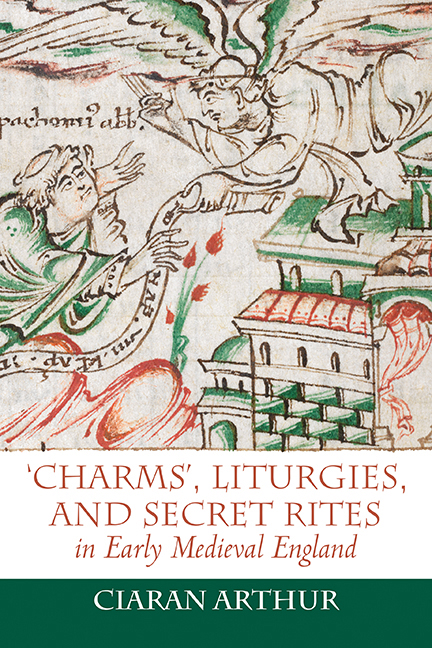Introduction
Published online by Cambridge University Press: 27 July 2018
Summary
‘Anglo-Saxon charms prove that Christianity could not hold back the pagans’ faith in their magical powers and attest to the enduring quality of a deep-seated belief in magic.’
The early medieval period continues to fascinate modern audiences on a global scale, and it is consistently presented as a strange and mysterious world teeming with sorcerers, witches, druids, monks, monsters, malignant supernatural creatures, and even the walking dead. According to popular understandings, the medieval world, both visible and invisible, was held together through constant battles between cosmologically opposing forces of good and evil, white and black magic, Christianity and paganism. So superstitious were medieval people that everybody – whether Christian or pagan, cleric or lay, learned or illiterate, nobleman or peasant – turned to magical spells, objects, talismans, folk remedies, and old wives’ tales in their attempts to survive the many hardships of a filthy, plague-ridden life. The charm is presented as perhaps the most important tool in the medieval survival kit; every conceivable situation could be influenced by a specific charm. They were used to guarantee good harvests, prevent natural disasters, influence important authorities, forcibly win somebody's love, curse enemies and bring about their ruin, find thieves, heal the sick, drive away death, and so forth. Ideas of medieval paganism, occultism, magic, and charms have profoundly influenced the entertainment industry through creative reconstructions in historical novels, fantasy literature, gaming, television, and cinematic productions. Popular representations of medieval magic have great market potential and they continue to shape modern understandings of the past.
Traditional scholarship has also sought to uncover evidence of medieval magic and pre-Christian religion in mysterious texts and artefacts. These surviving materials are seen to be magical precisely because of their enigmatic nature, and as such they have come to encapsulate an elusive medieval world that remains shrouded in a veil of superstition. Sources range extensively from Late Antiquity to much later Old Norse saga literature, but traditional scholarship has consistently returned to one vital repository of evidence in discussions of medieval magic and paganism. The so-called corpus of Anglo-Saxon charms has been venerated as a vault that houses rare evidence of surviving pre-Christian magical practices.
- Type
- Chapter
- Information
- Publisher: Boydell & BrewerPrint publication year: 2018



